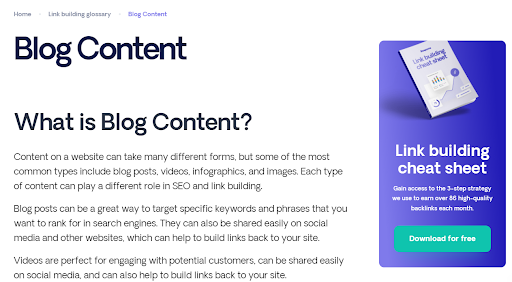
As we approach 2024, search engine optimization (SEO) is changing fast. Websites need to keep up to stay visible online. This guide will help you check and improve your site’s on-page SEO.
We’ll cover:
- Key parts of a good SEO check
- Useful tools for SEO work
- How to find and fix SEO problems
Let’s dive into our 2024 SEO Checklist to help your site shine online!
What’s an SEO Check?
An SEO check is similar to a health check-up for your website. It looks at how well your site works for both search engines and visitors.
Think of it as spring cleaning – it shows you what needs fixing and where you can grow.
Regular SEO checks are important because they:
- Keep your site up-to-date with new search engine rules
- Find problems that might be hurting your site’s performance
- Help you see if your SEO efforts are working
- Show you what your competitors are doing well
- Make your site better for visitors, leading to more engagement and sales
In today’s busy online world, SEO checks are a must. Let’s look at how to do one.
Helpful SEO Tools
Before we start the checklist, here are some tools that can help with SEO checks:
- Google Analytics: This free tool shows you how people use your site. It helps you understand your audience and see which content works best.
- Google Search Console: Another free Google tool that helps you monitor how your site appears in search results. It shows indexing status, errors, and keyword performance.
- Google Structured Data Testing Tool: This tool checks special code on your site that helps search engines understand your content better.
- SEMrush: A paid tool that offers keyword research, SEO analysis, and competitor insights.
- Screaming Frog: This tool crawls your website to find SEO issues like broken links or missing descriptions.
- Yoast SEO: A popular plugin for WordPress sites that helps optimize content for search engines.
Now, let’s go through the On-Page SEO checklist:
1. Title Tags
Title tags are HTML elements that provide a clickable headline for web pages in search results and browser tabs.

To audit your title tags:
- Ensure they are unique, relevant, and concise (50-60 characters).
- Include primary keywords and branding, prioritizing user readability.
- Use tools like Screaming Frog or SEO plugins to identify and fix duplicate, missing, or weak title tags for improved SEO.
2. Meta Descriptions
Meta descriptions are HTML summaries of web pages, displayed below title tags in search results. They help users gauge a page’s relevance to their query.
To audit meta descriptions:
- Ensure they are unique, informative, and accurately summarize the page content (150-160 characters).
- Include keywords, but avoid keyword stuffing.
3. Header Tags (H1, H2, H3, etc.)
Header tags (H1 to H6) structure content with headings and subheadings, clarifying content hierarchy for users and search engines.

To audit header tags:
- Use one H1 tag per page, reflecting the main topic and keywords.
- Use H2 to H6 for subheadings, maintaining logical structure.
- Ensure proper nesting and avoid keyword overstuffing.
4. Keyword Usage and Density
Auditing keyword usage and density involves assessing keyword frequency and distribution for natural, relevant, and effective SEO optimization.

To audit keywords:
- Research relevant keywords with tools like SEMrush or Ahrefs, targeting high-traffic, low-competition terms.
- Optimize content using SEO software like MarketMuse for keyword usage, density, and variations, ensuring topical coverage.
- Review web page content for natural, contextual keyword use, avoiding stuffing and potential penalties.
5. Internal Linking
Auditing internal links involves analyzing link structure for proper navigation, user experience, and link equity distribution.

To audit internal links:
- Use tools like Screaming Frog or SEMrush to crawl your site and list pages with internal links.
- Identify your most valuable pages, like high-converting landing pages or cornerstone content.
- Ensure important pages have more links for better visibility.
- Fix broken internal links that impact user experience and SEO.
- Review anchor text for descriptiveness, relevancy, and keyword inclusion without over-optimizing.
- Analyze click depth, aiming for important pages to be within 3-4 clicks from the homepage.
- Include relevant internal links in the main navigation, footer, and sidebar for easy access.
6. Image Optimization
Auditing image optimization involves analyzing images for user experience and search engine performance.

To audit image optimization:
- Compress images without losing quality to prevent slow load times using tools like TinyPNG or ImageOptim.
- Implement lazy loading to improve page load times and reduce server load.
- Add descriptive, relevant alt tags to images to improve search engine understanding and accessibility.
- Include relevant keywords in alt tags without stuffing.
- Name image files descriptively and include relevant keywords.

7. Schema Markup and Structured Data
Schema markup and structured data provide search engines with extra information about your content, improving search result accuracy and visibility.

To audit schema and structured data:
- Identify relevant schema types for your content from Schema.org’s documentation.
- Use Google’s Structured Data Testing Tool or Rich Results Test to analyze your schema markup.
- Fix errors or warnings identified in the test results.
- Ensure correct syntax (JSON-LD, Microdata, RDFa), with JSON-LD being most recommended.
- Include the required properties for your chosen schema type.
- Add recommended properties to enhance search results and click-through rates.
- Verify rich snippet eligibility with Google’s Rich Results Test.
8. Duplicate Content
An on-page SEO audit should include checking for duplicate content, as it can hurt rankings and result in penalties.

To audit for duplicate content:
- Use tools like Ahrefs or SEMrush to identify duplicate content.
- Update duplicate meta tags to be unique and relevant.
- Address duplicate content by rewriting, removing, or consolidating it.
- Implement canonical tags to indicate the original or preferred content version.
9. Keyword Cannibalization
Keyword cannibalization occurs when multiple pages target the same keywords, causing competition and reduced visibility.

To audit for keyword cannibalization:
- Conduct a keyword analysis to identify primary and secondary keywords for each page.
- Use SEO tools like SEMrush or Ahrefs to find keywords your site ranks for and the pages targeting them.
- Identify pages targeting the same keywords and evaluate their purpose and relevance.
- Consolidate or re-optimize pages to target unique keywords, reducing competition.
- For multiple pages targeting the same keyword, differentiate content and optimize for specific variations.
- Use canonical tags to indicate the preferred page version to search engines.

10. Voice Search Readiness
Auditing your website for voice search readiness involves optimizing content and structure for more conversational queries.

To audit for voice search readiness:
- Optimize content to answer common questions starting with “who,” “what,” “where,” “when,” “why,” and “how.”
- Focus on long-tail keywords and natural language phrases using tools like Answer the Public or Google’s “People also ask.”
- Optimize your site for local searches by including accurate location information, local keywords, and listing your business on Google My Business and local directories.
11. Call-to-action placement and Effectiveness
Auditing CTA placement and effectiveness is key for user engagement, lead generation, and conversions.

To audit CTAs:
- Ensure CTAs are prominently placed and visible. Place CTAs strategically, like above the fold or within the content.
- Make CTAs visually appealing with contrasting colors and clear fonts, without disrupting user experience.
Now Over to You:
By following this on-page SEO audit checklist, you can enhance your website’s performance and outpace your competition in 2024. Regular audits keep your site aligned with best practices and algorithm updates, ensuring continued success in the digital landscape.
For a deeper dive into your SEO strategy, consider an audit service from 42Works.
Need Help? Our SEO Audit Service Can:
- Find ways to improve your site’s SEO
- Give you clear, actionable advice
- Help boost your search rankings
With detailed insights and data-driven recommendations, our audit service, conducted by our team of SEO experts can help you achieve higher search engine rankings and increased online visibility.
FAQs
-
What’s the main goal of an SEO check?
An SEO check aims to find and fix issues in your site’s content and structure. It helps improve your search rankings and bring more visitors to your site.
-
How often should I check my site’s SEO?
Try to do a full SEO check at least once a year. This keeps your site up-to-date with best practices and search engine changes.
-
What does an SEO check look like?
SEO checks typically look at content quality, keyword use, page titles and descriptions, site structure, and user experience. These elements all affect how well your site performs in search results.
-
Why are headings important for SEO?
Headings help organize your content for both readers and search engines. Using relevant keywords in headings can improve your search rankings.
-
Does content quality affect SEO check results?
Absolutely! High-quality content is favored by both search engines and users. Focus on creating valuable, engaging content to improve your site’s performance.


